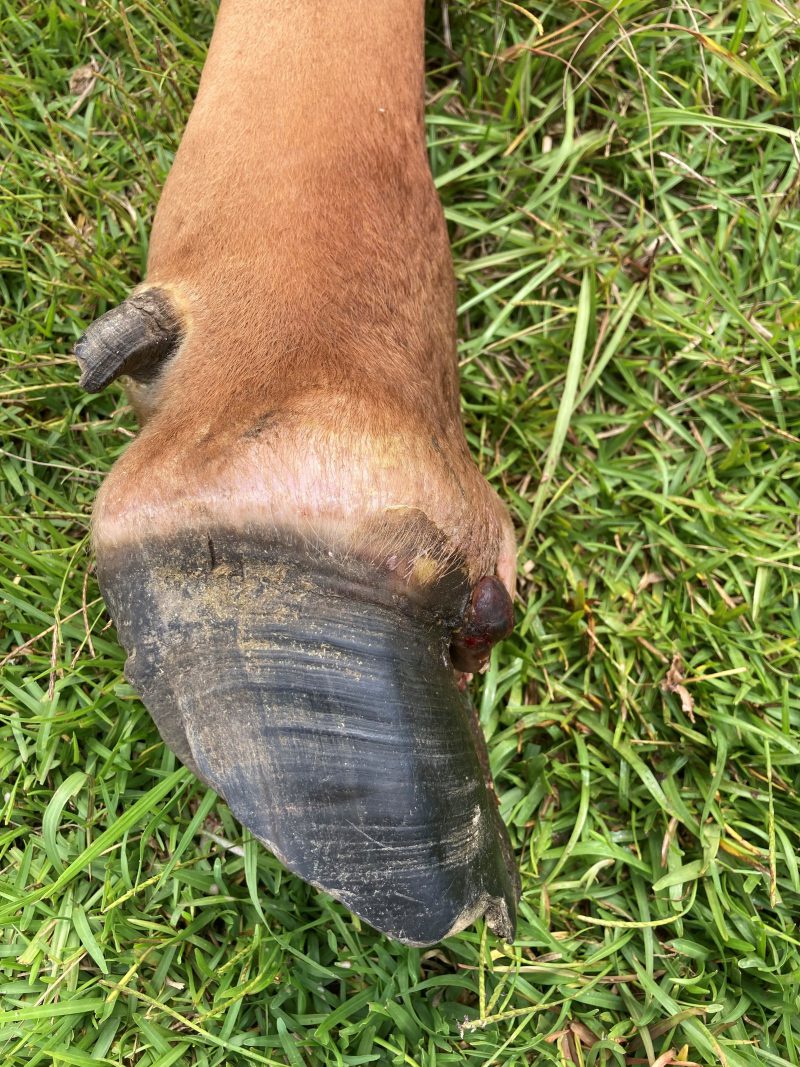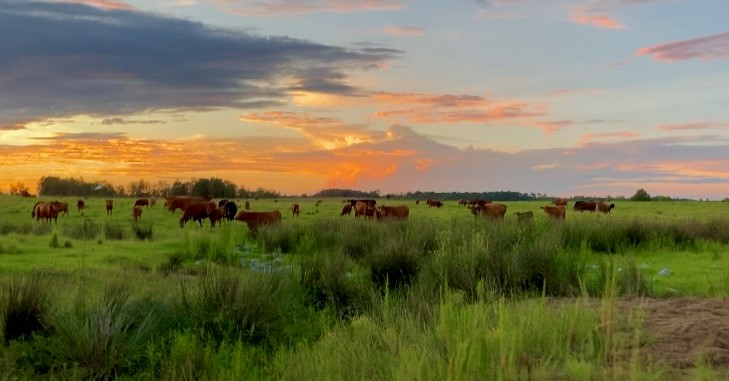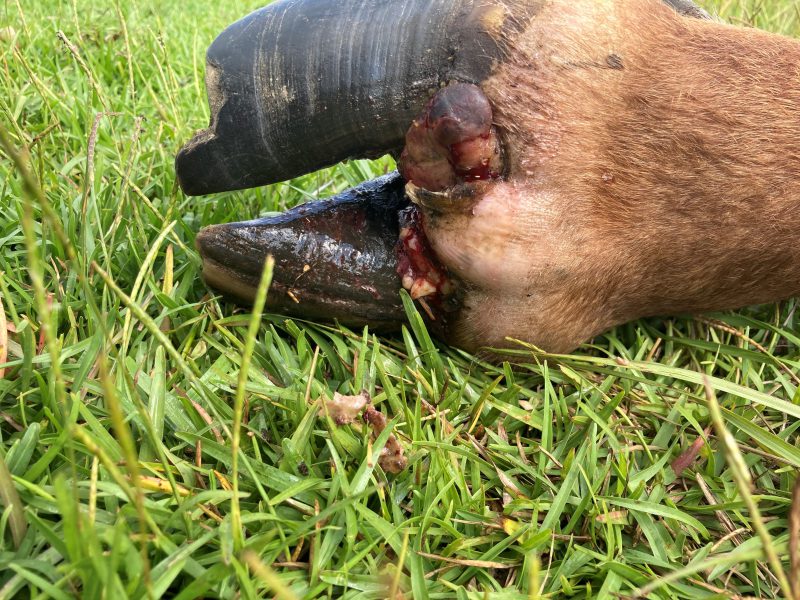I have been treating quite a bit of foot rot in my herd in the past month and odds are, if I am seeing it in the cattle we manage, everyone else is too. Thus, let us take a few minutes to review the ins and outs of foot rot.
The bacterium that is responsible for foot rot is always present in healthy skin, however, it needs an injury or wet skin to cause issues. Typically, we see foot rot when it is really wet or dry. The wet conditions allow for the bacterium to travel deeper into the tissue and the dry conditions usually result in injuries to the soft tissues of the foot from dry clods or ruts that the cattle travel over.
When foot tissue is healthy, it will not allow the bacteria to travel deep enough to cause issues. However, when that tissue is compromised by moisture, nutrient deficiency, disease or injury, the hoof wall becomes susceptible to the bacteria causing issues.
=
Major Causes of Foot Rot
-

Foot Rot in mature cow. Advanced stages of foot rot in mature cow. Swelling can be seen around coronary band band and with tissue damage in interdigital tissue. Credit: Kalyn Waters, UF/IFAS
Nutrient deficiencies: Nutrition plays a vital role in immune health. Deficiencies in zinc, selenium and copper can impact the animal’s ability to fight off infection and are key to skin and hoof health.
- Injury: Any injury that will create an opening for the bacteria to migrate deeper into the foot issue will likely result in foot rot. These injuries can come from things such as gravel, rocks, grazing stubble, and other rough surfaces the cattle might be exposed to like trailer floors during hauling or chutes during working.
- Environment: High temperatures and humidity cause the hoof skin to chap and crack. Cattle who are confined or standing in wet areas, especially those that have manure or urine are prime conditions for foot rot. Any wet areas will soften the foot tissue increases the animal’s likelihood of injection.
=
Symptoms of Foot Rot
Age and class of cattle does not impact their susceptibility to foot rot. When keeping an eye out for foot rot the following clinical signs should be observed:
- Onset of sudden lameness, which will increase as the infection progresses
- Swelling and redness of the coronary band and interdigital tissues (between the toes)
- Distributed swelling around both hoof claws (toes) and cause spreading of the claw
- Pictured (left) is advanced stages of foot rot in a mature cow. Swelling can be seen around coronary band band and with tissue damage in interdigital tissue.
=
Treatment Options
There are several antimicrobial products that are labeled for treatment of foot rot in addition to commercial vaccines that are approved for the use of controlling foot rot. While the reviews on the vaccines have been mixed, the responsible use of antimicrobial products remain very effective, especial when early treatment is administered. If your herd is experiencing continued issues with foot rot or your treatment methods are not working, a veterinarian should be consulted.
- Horn Fly Control In Cattle - June 20, 2025
- Tips for Introducing New Chickens into Your Coop - April 25, 2025
- Tips for a Great Chicken Coop - April 11, 2025


